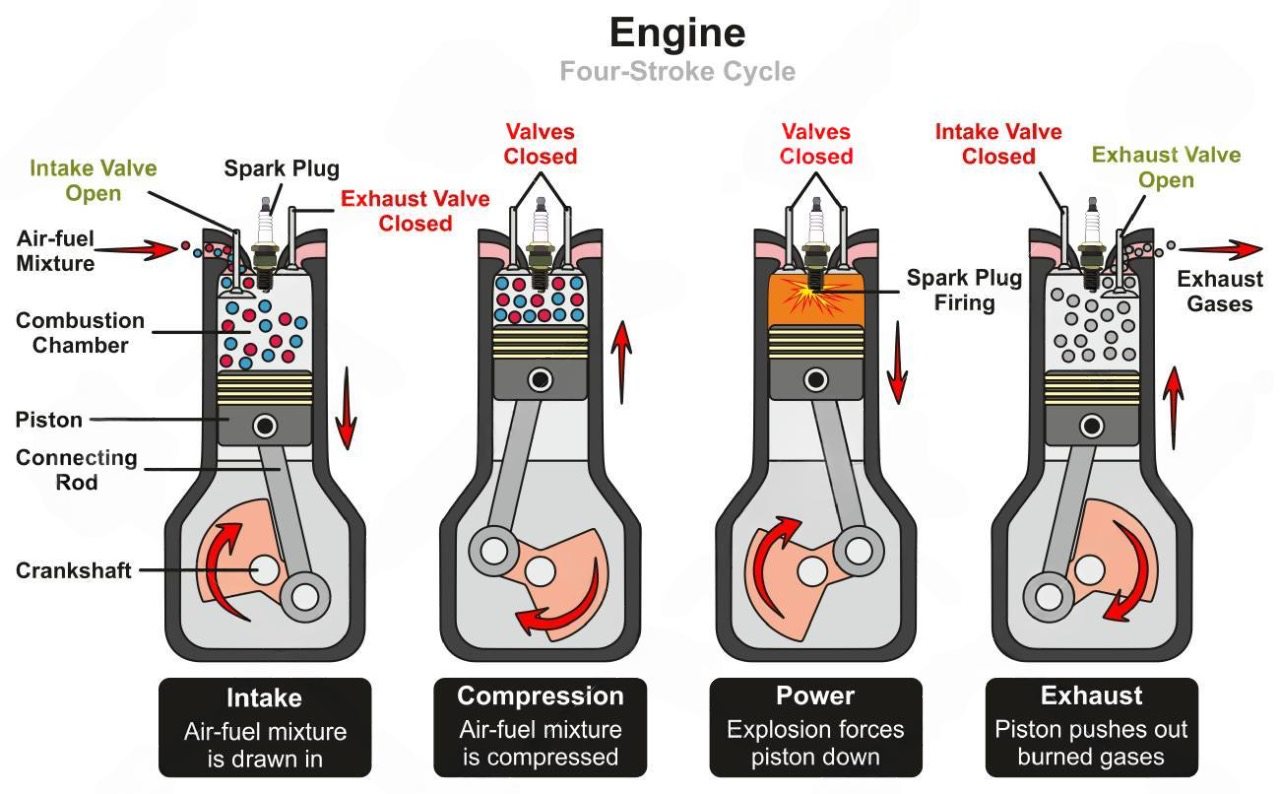Stages of Combustion

Combustion is the essence of creating power inside the engine, and for the majority of car engines, this is done in a four stage process (shown above).
Stage 1: Intake
The first stage of the cycle is intake. In this stage, the intake valve opened by the corresponding camshaft lobe, allowing the air-fuel mixture to fill the combustion chamber. This mixture comes through the intake manifold as the vacuum force of the piston moving down pulls it in.
Stage 2: Compression
The second stage is compression. As the piston moves back up, it compresses the air-fuel mixture to around 100-200 PSI in the cylinder. Compression is essential for complete combustion, which leads to the maximum amount of energy created.
Stage 3: Power
The third stage is power (also sometimes referred to as combustion). Here, the ECU sends voltage to the ignition coil, which then provides the spark plug with roughly 30,000-40,000 volts. At this point, the spark plug generates a spark in the combustion chamber, igniting the air-fuel mixture. In this rapid reaction, force is generated and the piston is pushed downward. Since all of the pistons are connected to the crankshaft, they each force the crankshaft to turn with each combustion stroke.
Stage 4: Exhaust
The last stage is exhaust. After the combustion of the air and fuel, exhaust gases from the reaction are left in the cylinder. As the piston moves back upward, the exhaust value is opened by its camshaft lobe, leading to the exhaust manifold. The piston forces the exhaust gases through the exhaust port and out of the combustion chamber. Now that the cylinder is empty, the four stroke cycle can repeat.